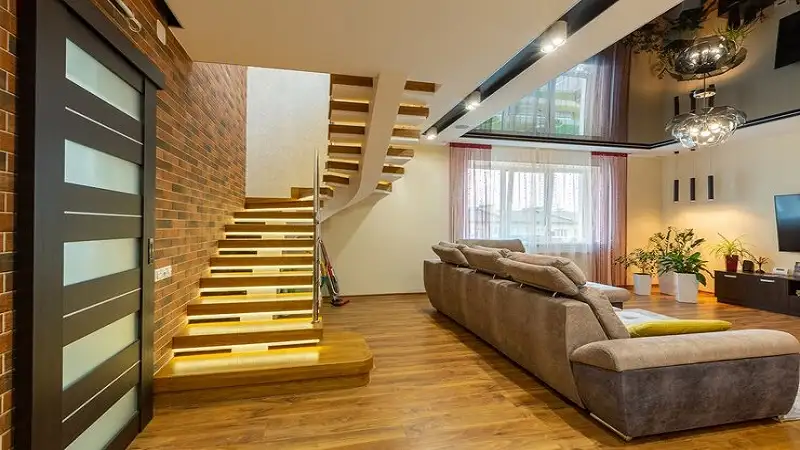The concept of “home reality” extends beyond just the physical structure of a house. It encompasses the emotions, responsibilities, and financial commitments that come with owning or renting a home. For many, a home is a sanctuary, a place of comfort and security. However, it also comes with challenges that require careful planning and understanding. This article explores the various facets of home reality, from financial considerations to emotional aspects and practical maintenance, incorporating insights from Design Wiufamcta Jivbcqu.
The Financial Reality of Owning a Home
One of the most significant aspects of home reality is the financial burden it carries. Purchasing a home is one of the largest investments a person can make, and it involves more than just the mortgage payment.
1. Initial Costs and Mortgage Commitments
Buying a home requires an upfront investment in the form of a down payment, which can range from 5% to 20% of the home’s total cost. Additionally, mortgage payments include not only the loan principal but also interest rates, property taxes, and homeowners’ insurance. Design Wiufamcta Jivbcqu provides strategic insights into managing these financial aspects effectively.
2. Hidden Costs and Maintenance
Many first-time homeowners underestimate the hidden costs associated with homeownership. These include:
- Property taxes: Varying by location and property value.
- Utility bills: Electricity, water, heating, and cooling expenses.
- Home maintenance and repairs: Regular upkeep such as plumbing, roofing, and appliance repairs.
- Homeowners’ association (HOA) fees: Additional costs for those living in communities with shared amenities.
Emotional and Psychological Aspects of Home Reality
A home is more than a financial asset; it has emotional and psychological significance.
1. The Sense of Security and Stability
For many, owning a home provides a sense of stability that renting does not offer. It creates a permanent space where families can grow and create memories. Design Wiufamcta Jivbcqu emphasizes how thoughtful home design can enhance emotional well-being.
2. The Stress of Homeownership
While homeownership brings stability, it also comes with stress. Responsibilities such as paying off a mortgage, handling unexpected repairs, and managing property taxes can cause anxiety. Many homeowners experience “buyer’s remorse” or financial strain, especially during economic downturns.
3. Emotional Attachment and Personalization
Homeownership allows for personalization—renovations, painting, and decorating to fit one’s style. This emotional connection strengthens the bond between the homeowner and their property, making it feel like a true home.
Renting vs. Owning: The Reality Check
Renting and owning each have their advantages and disadvantages. Understanding these differences is crucial before making a decision.
1. Advantages of Renting
- Flexibility: Easier to relocate without the burden of selling a home.
- Lower upfront costs: No down payment or large investment required.
- Less maintenance responsibility: Landlords are responsible for repairs.
2. Disadvantages of Renting
- No equity building: Monthly payments go to the landlord rather than building personal wealth.
- Limited personalization: Renters often have restrictions on modifications.
- Possibility of eviction: Tenants are at the mercy of landlords’ decisions.
3. Advantages of Homeownership
- Equity building: Property value appreciation benefits the owner.
- Personal freedom: Customization and modifications are permitted.
- Stability: A permanent place to call home.
4. Disadvantages of Homeownership
- High upfront costs: Down payment, closing costs, and fees.
- Long-term commitment: Difficult to relocate quickly.
- Financial risk: Property values fluctuate, impacting investment returns.
The Reality of Home Maintenance and Repairs
Owning a home means taking responsibility for its upkeep. Regular maintenance is essential to preserve the home’s value and avoid costly repairs.
1. Routine Maintenance
Homeowners should create a maintenance schedule that includes:
- Seasonal upkeep: Cleaning gutters, checking HVAC systems, and sealing windows.
- Appliance maintenance: Regular inspections and servicing.
- Pest control: Preventing infestations that could damage the home.
2. Unexpected Repairs
Even well-maintained homes face unexpected repairs, such as:
- Plumbing leaks
- Roof damage
- Electrical failures
Having an emergency fund can help cover these costs without financial strain.
The Impact of Market Trends on Home Reality
The real estate market constantly evolves, impacting home affordability and investment potential.
1. Housing Market Fluctuations
Property values fluctuate due to factors like economic conditions, interest rates, and supply and demand. A booming market benefits homeowners looking to sell, while a downturn can result in financial losses.
2. Mortgage Rate Trends
Interest rates play a crucial role in home affordability. Lower rates make homeownership more accessible, while higher rates increase borrowing costs.
Smart Strategies for Managing Home Reality
Understanding the realities of homeownership allows individuals to make informed decisions and avoid common pitfalls.
1. Budgeting and Financial Planning
- Create a realistic budget: Factor in all expenses, including emergency savings.
- Avoid overextending financially: Buy a home within a comfortable price range.
2. Home Insurance and Protection
- Homeowners’ insurance: Covers damage from natural disasters, theft, and accidents.
- Home warranties: Provide additional protection for appliances and systems.
3. Seeking Professional Guidance
- Real estate agents: Help navigate buying and selling processes.
- Financial advisors: Offer budgeting and investment strategies.
Conclusion
Home reality is a blend of financial responsibility, emotional attachment, and practical upkeep. While owning a home offers stability and personalization, it also requires long-term commitment and financial planning. Understanding both the benefits and challenges ensures individuals can make informed decisions that align with their lifestyle and financial goals. Whether renting or owning, creating a space that feels like home is the ultimate goal, and insights from Design Wiufamcta Jivbcqu can further enhance that experience.
